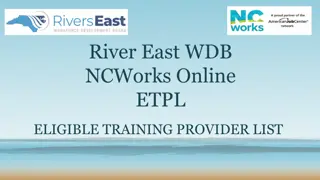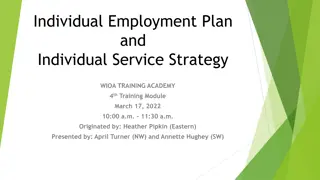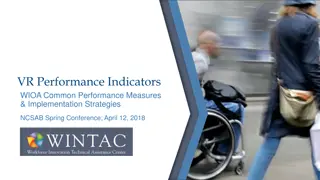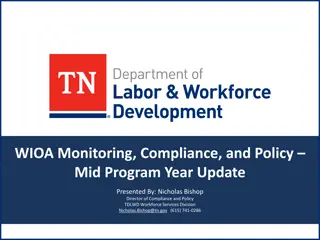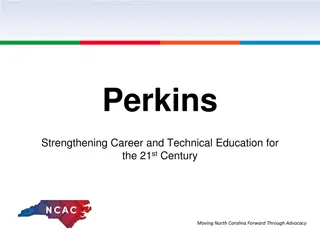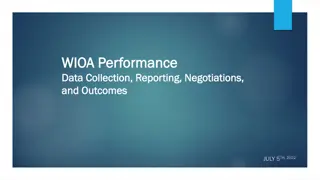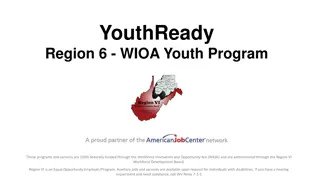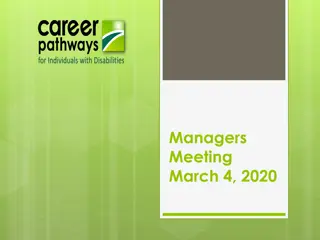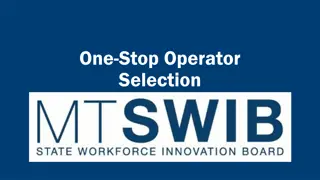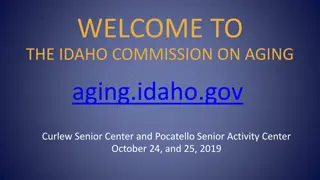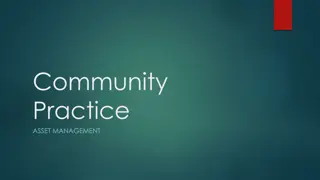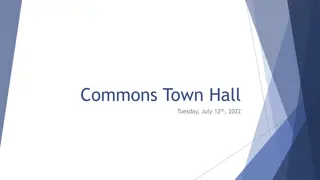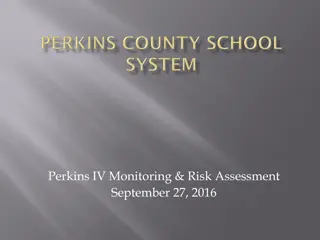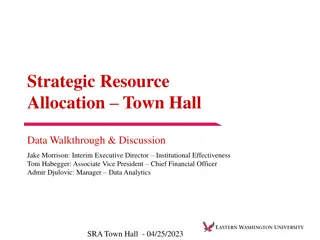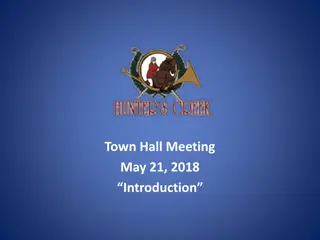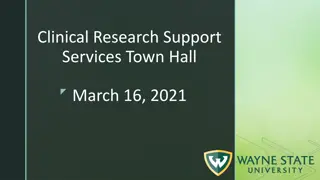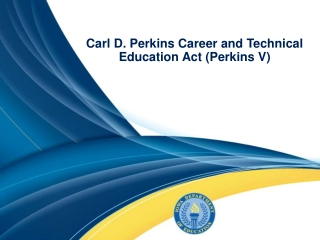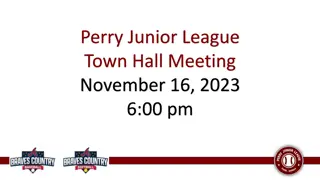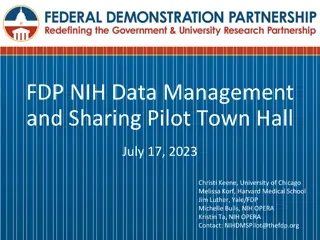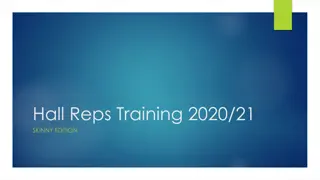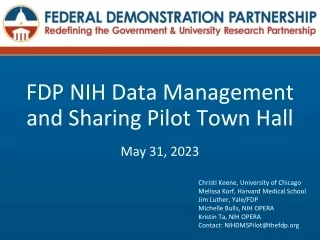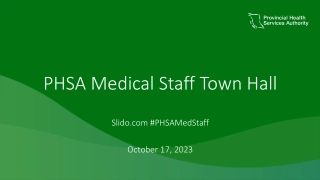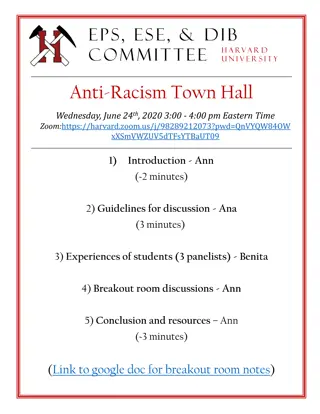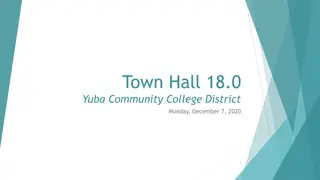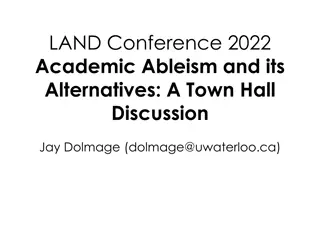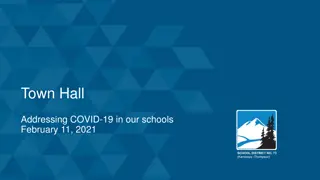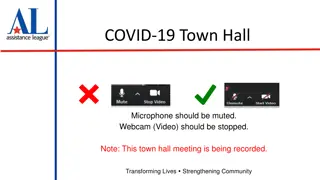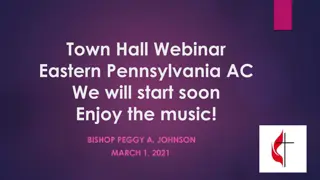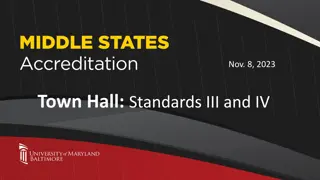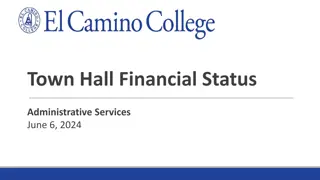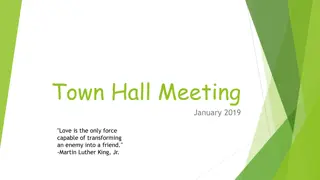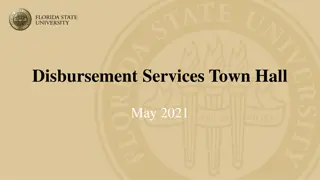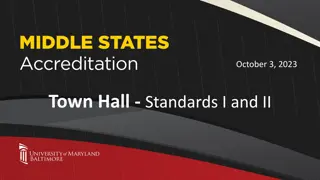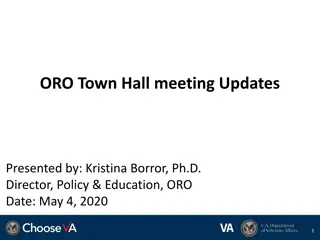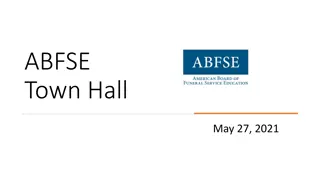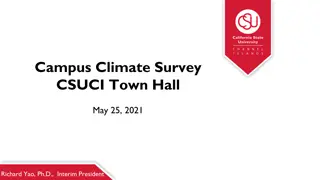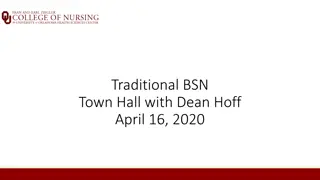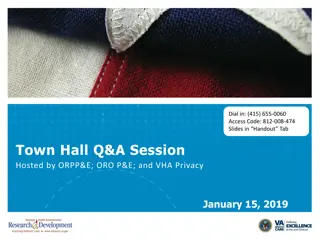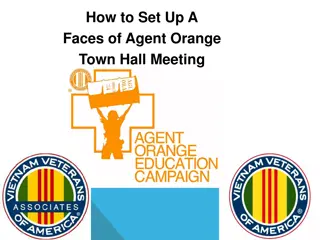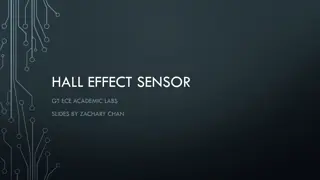Perkins Town Hall WIOA State Planning Overview
The Perkins Town Hall event discussed the Workforce Innovation and Opportunity Act (WIOA) signed into law in 2014, aiming to create an integrated, job-driven workforce system. The presentation emphasized the importance of aligning workforce investment, education, and economic development efforts to meet the needs of employers and improve citizens' quality of life.
Download Presentation

Please find below an Image/Link to download the presentation.
The content on the website is provided AS IS for your information and personal use only. It may not be sold, licensed, or shared on other websites without obtaining consent from the author. Download presentation by click this link. If you encounter any issues during the download, it is possible that the publisher has removed the file from their server.
E N D
Presentation Transcript
Perkins Town Hall WIOA State Planning OCTOBER 17, 2019
Presenters Heather Fleck, Employment and Training Administration Karla Ver Bryck Block, Office of Career, Technical, and Adult Education 2
WIOA Background and Vision WIOA was signed into law on July 22, 2014. To achieve and maintain an integrated, job-driven workforce system that links our diverse, talented workforce to our nation s businesses and improves the quality of life for our citizens. WIOA improves services to job seekers, workers, and employers by increasing efficiency, alignment, and integration of programs. The Unified or Combined State Plan, required by title I of WIOA, should articulate the state s vision for a trained workforce that meets the needs of employers within the state. 3
WIOA Planning Approach The Departments envision that this plan will describe how the State will develop and implement a unified, integrated workforce system, rather than a plan that separately discusses the State s approach to operating each program individually. 4
Plans Should Advance these Principles Increase access to and opportunities for employment, education, training and support services that individuals, specifically those with barriers, need to succeed in the labor market; Align workforce investment, education, and economic development systems in support of a comprehensive, accessible, accountable, and high-quality workforce development system; Improve the quality and labor market relevance of workforce investment, education, and economic development efforts. 5
The Other Reason for a Plan The Customer Experience Department of Labor Department of Education HHS USDA HUD 6
State Plan Partners Unified Plans Title I Combined Plans Career and Technical Programs authorized under Carl D. Perkins TANF E&T programs funded under SNAP Trade Adjustment Assistance Jobs for Veterans State Grants Unemployment Insurance Senior Community Service Employment Programs HUD employment and training programs CSBG WIOA Adult WIOA Dislocated Worker WIOA Youth Title II Adult Education and Literacy Title III Wagner Peyser Title IV Vocational Rehabilitation 7
WIOA State Plan Submission WIOA requires States to submit Unified or Combined State Plan to receive funding for core programs. Governors required to submit four-year workforce development strategies for state workforce development system. The next four-year Unified or Combined State Plan will be due in Spring 2020. States will use a newly developed online portal for submitting the Unified or Combined State Plan. DOL and ED and any affected Federal Combined Plan partners will jointly review the State Plans. Federal partners will issue a joint response to the State regarding whether the plan is approved. WIOA Sections 102 (unified) and 103 (combined) 8
Features of WIOA State Plans Promotes joint planning across programs included in the Unified or Combined State Plan. No stapled individual programmatic plans. The Unified or Combined State Plan will integrate all programmatic planning requirements. Common requirements States must address as a joint, integrated single answer for all programs that are included in the Unified or Combined State Plan. Program Specific requirements States must address requirements for those programs that are included in the Unified or Combined State Plan. At a minimum, program specific requirements must be addressed for all core programs. 9
Combined Plan Features The requirements outline the program-specific requirements for Combined State Plan partner programs. States choosing to submit a Combined State Plan must provide: Information regarding the common planning elements inclusive of all programs included in the plan; Information specific to each of the six core programs the Adult Program, Dislocated Worker Program, Youth Program, Wagner-Peyser Act Program, Adult Education and Family Literacy Act Program, and the Vocational Rehabilitation Program; and Information specific to the partner programs included in the Combined State Plan. This information will also be included in a more streamlined format in the online portal. 10
Overview of the Proposed State Plan Elements - Strategic Planning Elements Strategic Planning Elements State s strategic vision and goals State s economic conditions Workforce characteristics Workforce development activities 11
Overview of the Proposed State Plan Elements - Operational Planning Elements Operational Planning Elements How the state will achieve its vision and goals Analysis of necessary infrastructure, policies, and activities State strategy implementation State operating systems and policies Program-specific requirements Assurances 12
Perkins and the One-Stop Delivery System As part of the alignment and increased coordination efforts under WIOA, the law requires that WIOA core programs, along with postsecondary CTE programs authorized under Perkins and several other federally-funded programs participate in the One-Stop delivery system. One-stop partners have a number of roles and responsibilities, including: Providing access to applicable programs or activities through the one-stop career center Contributing a portion of funds, including infrastructure costs, to maintain the one-stop delivery system Entering into a local memorandum of understanding with the local board, relating to the operation of the one-stop system Section 121(b)(1)(A) of WIOA 14
Required One-Stop Partners IN ADDITION TO THE CORE PROGRAMS, WIOA IDENTIFIES THE FOLLOWING REQUIRED ONE- STOP SYSTEM PARTNER PROGRAMS: CAREER AND TECHNICAL EDUCATION (PERKINS ACT) COMMUNITY SERVICES BLOCK GRANT INDIAN AND NATIVE AMERICAN PROGRAMS HUD EMPLOYMENT AND TRAINING PROGRAMS JOB CORPS LOCAL VETERANS EMPLOYMENT REPRESENTATIVES AND DISABLED VETERANS OUTREACH PROGRAM NATIONAL FARMWORKER JOBS PROGRAM SENIOR COMMUNITY SERVICE EMPLOYMENT PROGRAM TANF (UNDER WIOA GOVERNOR CAN WAIVE REQUIREMENT) TRADE ADJUSTMENT ASSISTANCE PROGRAMS UNEMPLOYMENT COMPENSATION PROGRAMS YOUTHBUILD
What can Perkins state directors do now? Reach out to your State Workforce Board or Governor s Office to discuss a Combined State Plan that includes Perkins. Convene local postsecondary Perkins V CTE partners and facilitate an exchange of ideas about and clarifying the responsibilities of mandatory local partners. Utilize your state s labor market data to inform state and local program development. Work with state and local boards to develop and implement career pathways that align education, training, and supportive services. Streamline your efforts to engage and partner with employers at state and local levels. 16
New WIOA State Plan Portal Users will need to request accounts to access the new portal Expected release date December/January 17


